How to Get Rid of Bedbugs: Key Facts About Bedbugs
- Bedbugs are common in residential and commercial settings.
- Signs of a bedbug problem include small pale yellow eggs and rust-colored droppings on bedsheets and pillowcases.
- Bedbug infestations can quickly spread beyond the bedroom mattress and throughout the house.
- Bedbugs travel on shoes and clothing, migrating to furniture, rugs, and carpeting.
- The treatment options for eliminating bed bugs include heat, steam, and chemical products. Repeated applications are often necessary.
- With Pest control professionals, the job could be handled with one visit.
- Bedbugs do not spread diseases
- They are not more common among low-income households
- Bedbugs occur in both clean and unsanitary environments
- They are visible to the naked eyes
Bedbugs

Bedbugs are small, oval, brownish insects that live on the blood of animals or humans and can move quickly over floors, walls, and ceilings. These animals don’t fly but they can move quickly over floors, walls, and ceilings. Immature bedbugs shed their skins five times before reaching maturity and require a meal of blood before each shedding.
Bedbugs are so smart that they know where to hide to avoid detection when they infest your home. They have a very high reproductive rate and their female can lay as many as 500 eggs in her lifetime.
What Attracts Bedbugs to Your Home?
Bed bugs are not attracted to dirty conditions and can live in any environment, as long as they have access to the one thing they need to survive: blood. Unlike mosquitoes and ticks, bed bugs can’t fly or live on their hosts, so they must hide near their food source and wait for a meal to become available. They can live anywhere from the cushions of a sofa to the carpet of a library, so if you have bed bugs in your apartment, that’s why. The few causes of bedbugs in your home are:
- Purchasing used furniture
- Cross-contamination in a multi-unit environment.
- Contamination from a hotel, resort, or hostel.
- New people staying in your home.
Where Bedbugs Live
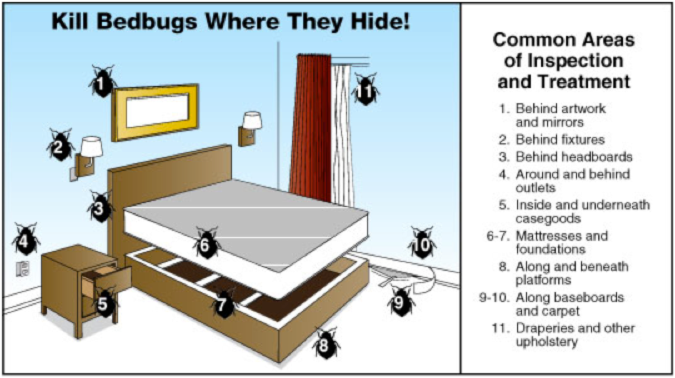
They can live anywhere as long as they have access to the one thing they need to survive: blood. They live in groups in hiding places, typically in mattresses, box springs, bed frames, and headboards, but can spread to any crevice or protected location.
How to Identify Bedbugs Bite
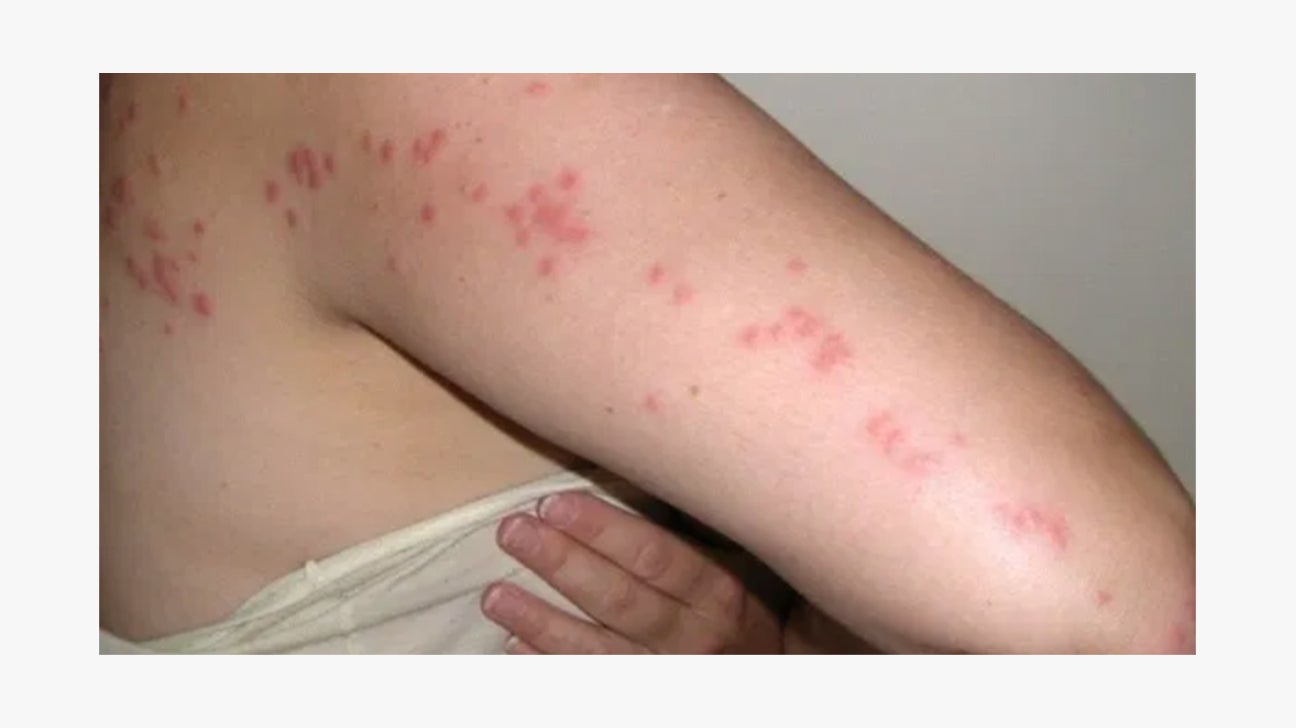
Bedbugs bite is accompanied by lesions, wheals on the skin, and intense itching. Bites usually happen overnight, and they live within 8 feet of where people sleep.
Bedbugs are active mainly at night and usually bite people while they are sleeping. Their mouth part is specially adapted to piercing and sucking modes of feeding. Most bites are painless at first but later turn into itchy welts. Bedbug bites are on any area of skin exposed while sleeping and do not have a red spot in the center. Oftentimes, people mistake itching and welts for other causes, not knowing that it is bedbugs. To confirm bedbug bites, you must find and identify the bugs themselves.
Signs of Bedbug Infestation
If you notice the following, it could be a pointer to the fact that bedbugs have infested your home:
- If you wake up with itchy areas you didn’t have when you went to sleep
- Dark or rusty spots of bedbug excrement on sheets and mattresses, bed clothes, and walls
- fecal spots, egg shells, or shed skins in areas where bedbugs hide
- An offensive, musty odour from the bugs’ scent glands.
Also, See: How to Get Rid of Houseflies
What to do if You Suspect Bedbug Infestation
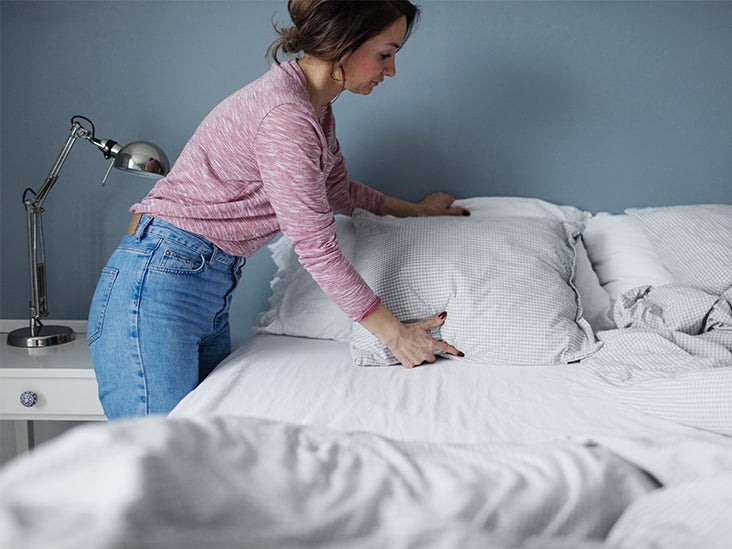
If you suspect bedbugs infestation in your home, do the following:
- Remove all bedding and check it carefully for signs of the bugs or their excrement.
- Remove the dust cover over the bottom of the box springs and examine the seams in the wood framing.
- Peel back the fabric where it is stapled to the wood frame.
- check the area around the bed, including inside books, telephones or radios,
- Check your closet, because bedbugs can attach to clothing
- Call an exterminator, who will know what to look for.
How to Get Rid of Bedbugs on Your Own
You can get rid of bedbugs on your own although it can be difficult and will require patience and lots of effort. You can try different chemical and nonchemical approaches. Certain factors can make bedbugs harder to remove, such as clutter and travel. If you cannot get rid of them on your own, you may have to call in a professional exterminator.
How to Keep Bedbugs Infestation from Spreading
There are various ways you can keep bedbug infestation from spreading in your home.
- Seal any small hiding with silicon caulk.
- Remove infested items and them in a sealed plastic bag and treat them.
- Place items that cannot be treated in a sealed plastic bag or storage container.
- Purchase protective covers that seal mattresses and box springs.
- Vacuum after each use.
- Discard furniture responsibly if you can’t safely eliminate the bed bugs.
Bedbug Bite Treatment
- Wash the affected skin with soapy water.
- Treat itchy bites with anti-itch cream and/or allergy medication.
- Visit your doctor or dermatologist if you have more severe symptoms.
How to get rid of bedbugs at home
1. Identify the Infestation
Bedbugs can be difficult to detect, so it is important to find them early before they reproduce. Search for bedbugs yourself or hire a professional to do an inspection. If you find one, follow the steps above to contain the infestation
2. Nonchemical Or Natural Treatment Measures
Encasement
The encasement is a key element in isolating the bed from bed bugs. It involves wrapping the box spring and mattress in a fabric that traps the bugs inside and prevents introduction from outside. Special zippered sheets are used to achieve this. Encasement should be left on for at least one year and can be purchased online. Follow home measures before encasing the bed.
Traps
Moat-style traps can be used to get rid of bedbugs. It isolates the bed and intercepts bed bugs between their hiding places and their journey to bite the host. They are available for purchase online, but can also be made at home.
Recommended: How to Get Rid of Cockroaches
Heat
Temperature is an effective way to get rid of bed bugs in a mattress or other important areas. Wash affected bedding or clothing in hot water for 30 minutes, dry it in a dryer on the highest heat setting for at least 30 minutes, and put it in a freezer for four days to make sure all bed bugs are dead.
Cold
Bed bugs can be killed by cold temperatures, but it requires temperatures below -18°C (0°F) for at least 4 days in order for the cold to penetrate an object and kill all the bugs and eggs. Smaller items can be put in a suitably cold freezer, but larger objects take longer. Also, leaving a room empty for more than a year can be effective for killing bed bugs as this deprives them of sustenance.
Plant Oil-based Products
Plant oil-like products like EcoRaider and Bed Bug Patrol, are less toxic than chemical insecticides, and they work well against bedbugs.
Steam Cleaners
Steam must be at least 130°F to treat carpets, baseboards, bed frames, and other furniture, and diffusers should be used to prevent bed bugs from scattering.
Chemical treatments
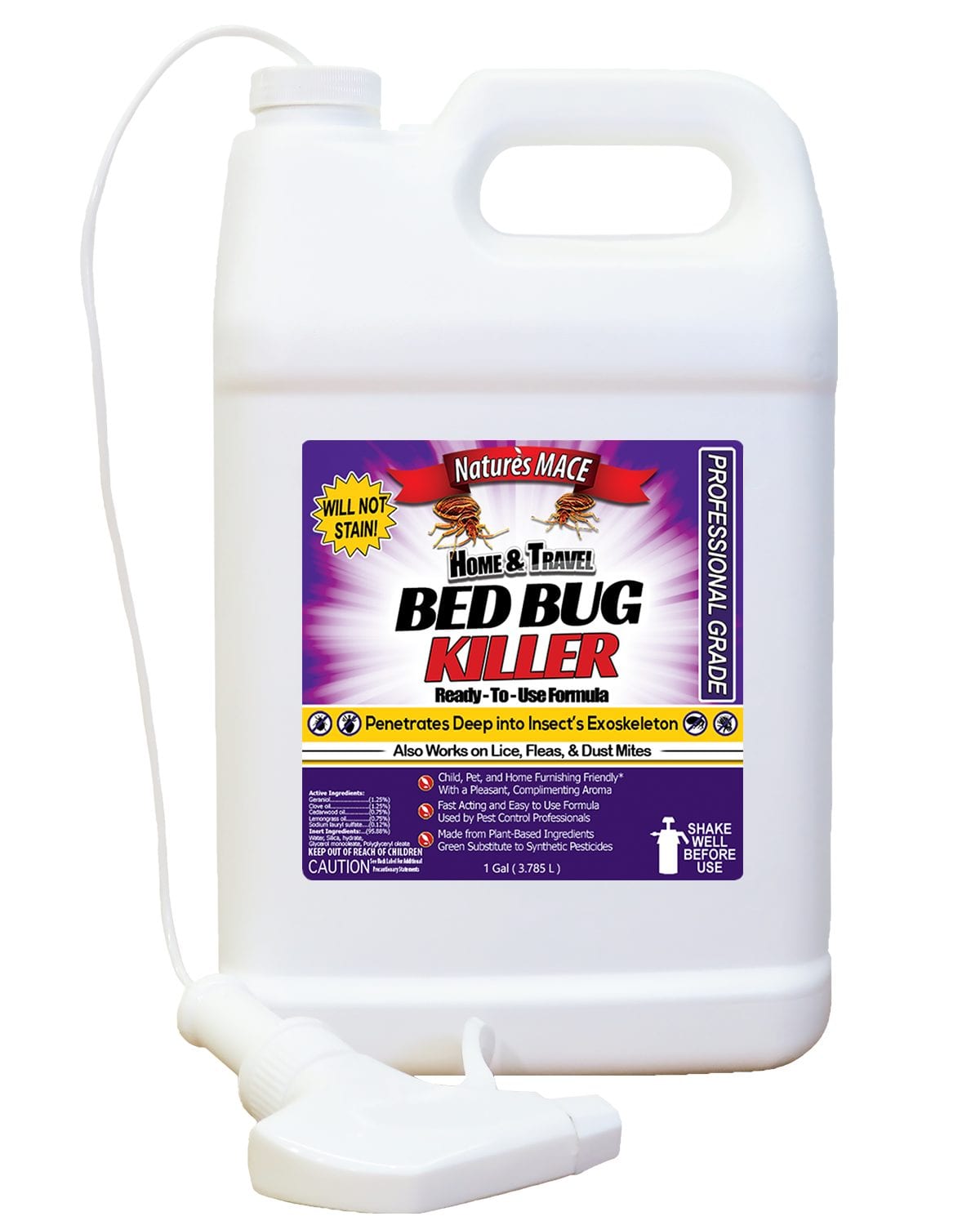
Some chemicals are available for purchase online or from hardware stores. These can be hazardous when used indoors.
It is important always to use an approved product and to follow the instructions with care. If you are using chemicals, be sure to use only products registered by EPA as pesticides. Because treating your bed and bedroom with insecticides can be harmful, it is important to use products that can be used safely in bedrooms. Do not treat mattresses and bedding unless the label specifically says you can use them on bedding.
Pyrethrins and Pyrethroids
Pyrethrins and pyrethroids are the most commonly used pesticides for bed bug treatment. They act on the nervous system of the bugs, but some populations have become resistant to them.
Desiccants
Desiccants destroy bed bugs’ protective outer coating and kill them through dehydration, not neurochemical. These include diatomaceous earth dust (DED)
Insect growth regulators (IGRs)
Examples include (S)-methoprene and hydropene. The insects must bite for blood before the pesticides take effect. This makes them an unattractive option.
Carbamates
They are more effective than pyrethrins and pyrethroids, but cases of resistance are emerging. Examples include bendiocarb and propoxur.
Neonicotinoids
Examples include imidacloprid. These have been found to produce no resistance and are effective. They have no residual effect.
Pyrroles
These are very slow acting, and they have limited efficacy but no issues of resistance. The only pyrrole bed-bug pesticide registered in the U.S. is chlorfenapyr.
Hire an Exterminator
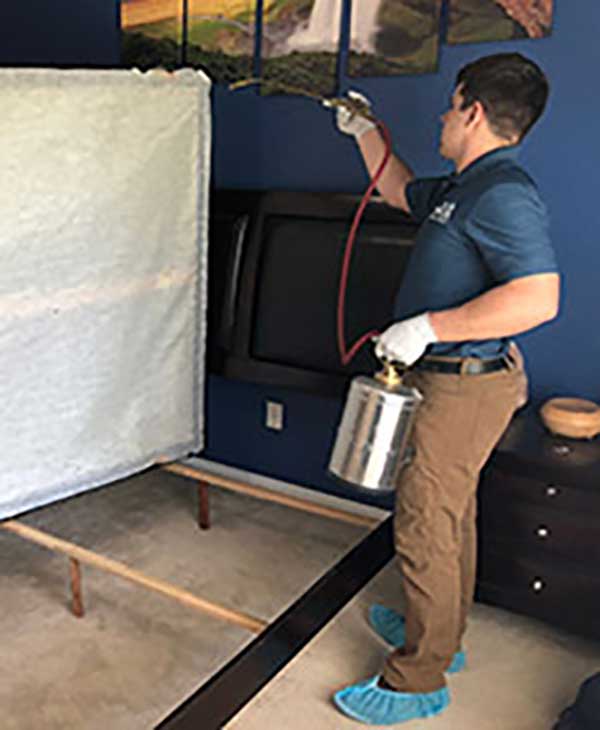
Hiring a bedbug elimination pro can vary in cost, depending on the size of the home or property, the extent of the infestation, the size or reputation of the extermination company, and the techniques needed to eliminate the infestation. Local exterminators may use chemicals, pesticides, and steam or heat treatments to get rid of infestations. If living in an apartment complex or shared living space, you may need to work with your landlord or property owner to address the infestation in the entire complex. Call around for estimates and read reviews to make sure a pest control company is trustworthy.
Summary
Bed bug infestations can be annoying. But you can get rid of bedbugs by following the prevention tips above, home treatments, and hiring a professional exterminator.
FAQS
Do Bed bugs cause disease?
No, bed bugs are not known to cause any diseases. They only constitute a nuisance.
How can I treat bedbug bites?
Most of the time, bedbug bites will go away on their own. If you have a more severe reaction to them, you may wish to apply topical steroids or take an oral antihistamine.
How long does it take to get rid of bedbugs?
Getting rid of bed bugs is a process that depends on the severity of the infestation, the elimination method, and the treatment.




